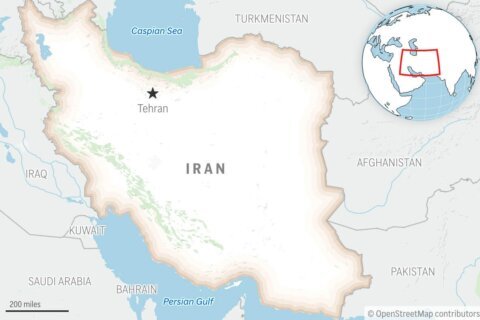LAUREL, Md. – Two months after the Intercounty Connector speed limit went from 55 to 60 mph, speeding tickets have dropped 30 percent, according to documents obtained by WTOP.
Maryland Transportation Authority (MDTA) records show that 149 tickets were handed out between April 1 and May 31, 2013, compared with 211 tickets during the same period in 2012.
“It appears to us that the new speed limit is working and we clearly listened to drivers who wanted us to reevaluate it,” said MDTA Acting Executive Secretary Bruce Gartner.
Unlike previous years where about a dozen drivers were ticketed for going between 59 and 64 mph along the ICC, no driver has received a ticket going below 73 since the switch-over.
The average speeding ticket since April has been for 82 mph, but on the whole, it appears the new speed limit sits well with drivers.
Drivers complained that the 55 mph limit was too low for a new highway with little traffic and long straightaways. Earlier in 2013, a detailed traffic safety and engineering report found that the road could safely manage 60 mph.
Former MDTA Executive Secretary Harold Bartlett said the agency always wanted a full year of operation before making any decisions on speed limits. That’s similar to the process on the 495 Express Lanes in Northern Virginia, where the speed limit changed on Monday from 55 to 65 mph. A detailed traffic safety and engineering report found those lanes could support speeds up to 70 mph.
But when asked, Gartner tells WTOP that the MDTA will not follow the 495 Express Lanes.
“The thought is that 60 mph is the right speed now that we’ve done the analysis,” he said. “We’re not considering 65 mph.”
Regardless of the speed limit, there are always scofflaws.
Fourteen drivers have been caught going 95 mph or more. Three went more than 100 mph, including an Olney man pulled over going 126 in a 60 zone. According to documents, that driver received four citations totaling $1240. Court records show the same driver has been pulled over five times since January 2012, including one for reckless speeding one day after his ICC joyride. The other four were for not wearing a seat belt.
Meanwhile, MDTA released a study on Thursday showing how much time the ICC saves drivers commuting to work.
According to the ICC Before & After Traffic Study, motorists save up to 25 minutes compared to other routes. The Maryland State Highway Administration and the Council of Governments conducted the study between December 2011 and December 2012.
The MDTA also says the ICC benefits those side roads. Traffic on commuter routes like Maryland routes 650, 198, 28, 108 and 115 has decreased between 5 and 10 percent since the ICC opened.
“Clearly the ICC is working. People are saving time on their commutes and that’s a good thing. Meanwhile, people using the alternative east-west roads are also seeing traffic get a little better,” said Gartner.
New statistics show that about 40,000 vehicles drive the ICC between Interstate 370 and Georgia Avenue (“west end”) and 30,000 use the ICC between US Route 29 and Interstate 95 (“east end”).
While critics like Montgomery County Councilman Phil Andrews believe the highway is too empty, the MDTA says those numbers are matching their projected numbers and graphs show an upward trend in ridership.
“Remember we don’t build a road to be busy from the day it opens. We are looking at managing congestion 30 years from now,” said Gartner.
As to suggestions of lowering tolls to increase ridership, as Andrews suggested last year, Gartner says their studies show that not enough new riders would drive the ICC to offset the drop in revenue.
Take a look at an analysis of reducing tolls on the ICC:
Analysis of reducing tolls on the ICC
Follow @WTOP on Twitter.







